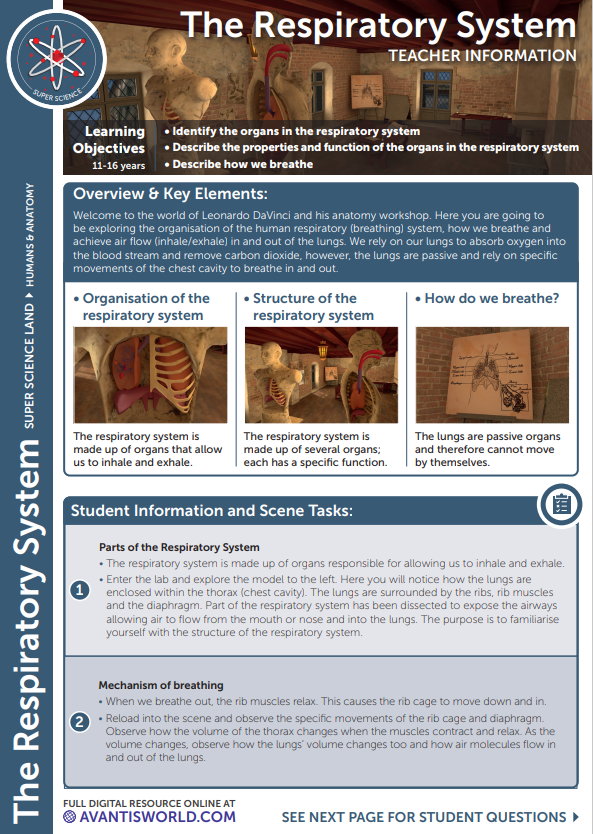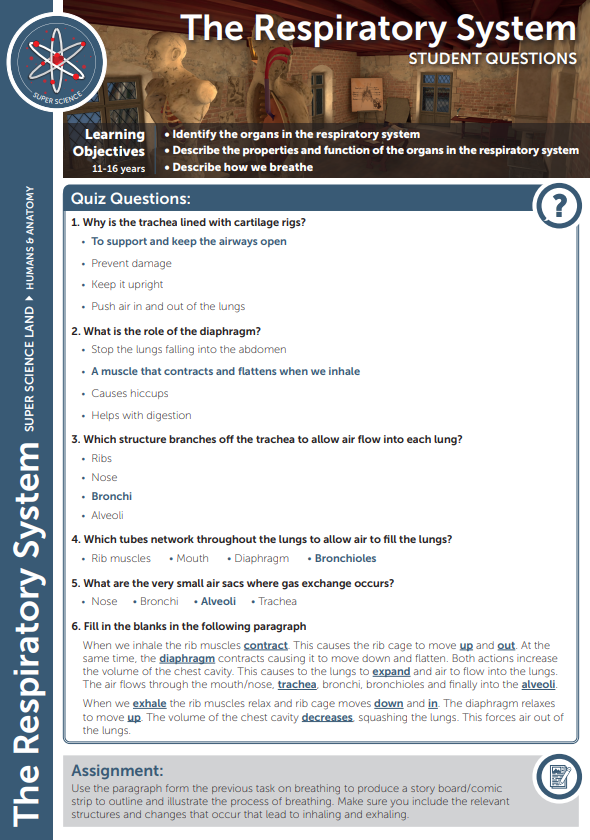 Loading...
Loading...
Initial language selection is based on your web browser preferences.
# Learning objectives 1: To identify the organs in the respiratory system.{.info} 2: To describe the properties and function of the organs in the respiratory system.{.info} 3: To explain how we breathe.{.info} # Organisation of the Respiratory System{.objective .objective1} The respiratory system is made up of organs responsible for allowing us to inhale and exhale. Enter the lab and explore the model to the left. Here you will notice how the lungs are enclosed within the thorax (chest cavity). The lungs are surrounded by the ribs, rib muscles and the diaphragm. Part of the respiratory system has been dissected to expose the airways allowing air to flow from the mouth or nose and into the lungs. The purpose is to familiarise yourself with the structure of the respiratory system. # Mechanism of Breathing{.objective .objective2} When we breathe out, the rib muscles relax. This causes the rib cage to move down and in. Reload into the scene and observe the specific movements of the rib cage and diaphragm. Observe how the volume of the thorax changes when the muscles contract and relax. As the volume changes, observe how the lungs’ volume changes too and how air molecules flow in and out of the lungs. # Teacher Resources ### Download Teacher Notes [](https://data.avncloud.com/activities/794431/files/The%20Respiratory+System+Teachers+Notes+1.pdf?date=1677685435&size=1080829&md5=d22bb745570316b2e0dee2681256f78f) ### Student Quiz Answers Document [](https://data.avncloud.com/activities/794432/files/The%20Respiratory+System+Teachers+Notes+2.pdf?date=1677685503&size=615655&md5=b2f40e6f18cc783cb68945985937849e) ### Download the Student Quiz Document [](https://data.avncloud.com/activities/794433/files/The%20Respiratory+System+Teachers+Notes+3.pdf?date=1677685608&size=94876&md5=19236c2e74b9ecec347f950c1582f8cc)